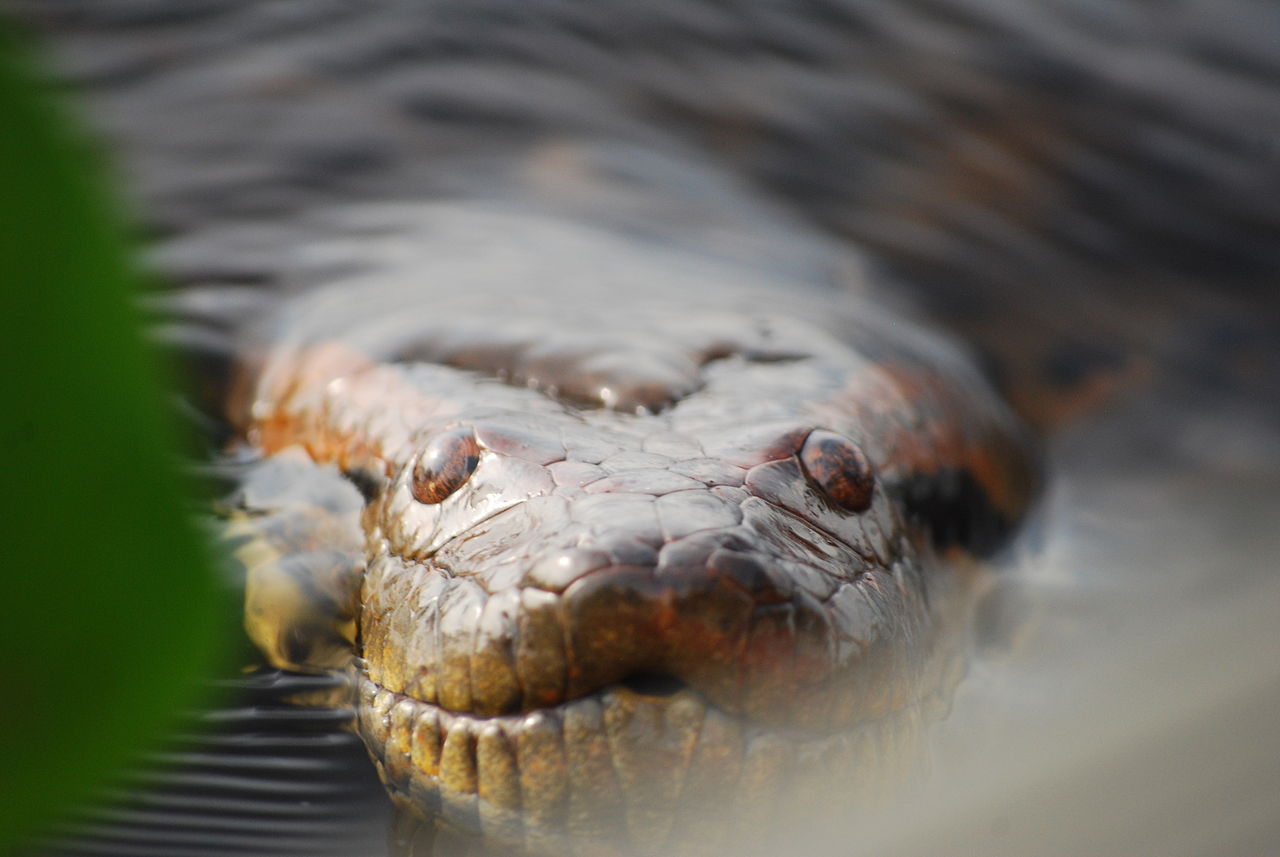Scientific Name
Eunectus murinus
Classification
| Kingdom | Animalia |
| Phylum | Chordata |
| Class | Reptilia |
| Order | Squamata |
| Family | Boidae |
| Genus | Eunectus |
| Species | murinus |
IUCN Redlist Status

Location
Green anacondas are found in northern South America in areas surrounding the Amazon River Basin.
Habitat
They live in the rainforests of the Amazon, and are often located near sources of water such as swamps, marshes, streams, rivers and lakes.
Diet
Green anacondas feed on a variety of animals. This includes rodents, birds, fish, turtles and caiman. Capybaras, who escape from predators such as jaguars by running into the water, are perfect meals for anacondas. If an anaconda is large enough, it may attack larger mammals, including deer. There have even been several reports of green anacondas attacking humans, but few of these reports are substantiated.
Size
They are the largest (by weight) snakes in the world. They are also among the longest snakes in the world. Only reticulated pythons, located in southeast Asia, rival adult anacondas in length.
These giant reptiles often grow between 20 - 25 feet. They can weigh as much as 400 - 500 pounds.
Description
Green anacondas are, as their name suggests, green. They have black spots across their entire bodies that are unsymmetrical, forming perfect camouflage for the thick, dense forests that they live in. Spots on the sides of their bodies often have yellow centers. Like all reptiles, green anacondas have scaly skin. Their skin is dry and somewhat thick. They are very strong and muscular which gives them the ability to attack and kill large prey.
Green anacondas are not venomous, and do not kill their prey with bites alone. Instead, they will bite their prey and then wrap their massive bodies around the prey. As their prey is exhaling, the anaconda will squeeze their bodies tighter around it. This crushes the animal and also causes it to suffocate. This process is called constriction.
After this constriction process, green anacondas will begin swallowing their prey whole. Their jaws are held together by stretchy ligaments, allowing their mouths to open to sizes much larger than the initial size of their heads.After swallowing their prey, it may take several weeks for anacondas to completely digest their meals. This is due to anacondas' slow-acting digestive systems.
Adaptations
Green anacondas are very well adapted to living in the tropical rainforests of the Amazon River Basin. Since they are cold-blooded, year-round warm-temperatures help to keep their blood warm.
Although they are slow and cumbersome on land, green anacondas are fast and agile in the streams and rivers of the Amazon. Their eyes and nostrils are positioned on the tops of their heads, so that they can submerge most of their bodies while laying in wait for prey near the water's edge.
Reproduction
Anacondas are ovoviviparous, which means that the eggs hatch while still inside the mother. The mother will then give birth to live young. Green anacondas can give birth to over 20 live young at a time.
Other Facts
In 1997, the movie "Anaconda" was made. The film features a giant green anaconda that is being hunted by a snake hunter and a film crew.

